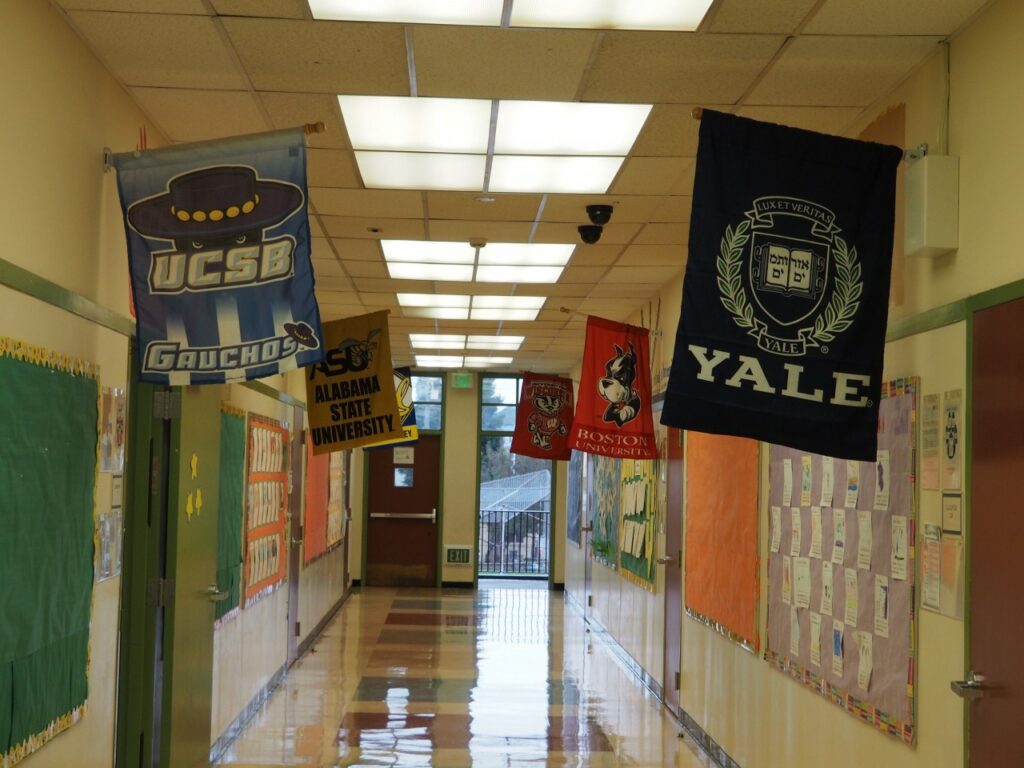Report reveals national ‘discipline gap’
 Liv Ames for EdSource
Liv Ames for EdSource
A study of national intermission rates shows a "discipline gap," with African-American and disabled students having the highest rates and Asian and white students the lowest. Altogether, 3.v meg public school students were suspended from school at least in one case in 2011-12.
"Given that the average suspension is conservatively put at 3.five days, we estimate that U.S. public school children lost virtually xviii million days of teaching in but one school year considering of exclusionary discipline," co-ordinate to the written report, Are We Closing the School Discipline Gap?, by The Civil Rights Project at UCLA.
Out-of-schoolhouse suspensions, the authors say, exacerbate the achievement gap. They point to a 2022 written report past Attendance Works that found that missing three days of schoolhouse in the calendar month before taking the National Assessment of Educational Progress examination translated into 4th-graders scoring a full course level lower in reading on the test.
The UCLA study found a suspension charge per unit for eye and loftier school students of 23.ii percent for African-American students and 18.1 percent for students with physical and mental disabilities. That compares with 6.seven pct for white students and 2.v percent for Asian students. Latino students had a suspension charge per unit of 10.8 percentage.
At the elementary level, the suspension rates were much lower, but African-American students and students with physical and mental disabilities still were the almost likely to exist suspended, with a rate of seven.vi percent for African-Americans and 5.iv percent for students with disabilities. That compares to one.6 percent for white students and 0.five percent for Asian students. Latino students had a rate of 2.1 pct. Among the elementary schoolhouse students with disabilities, children with an emotional disturbance or with significant learning disabilities had the highest risk for pause, the authors said.
California's overall pause rate for middle and high schools was 9 percent, with a blackness/white gap of 13 percentage points. Although Wisconsin had a lower overall rate, it had the highest black/white gap – 34 per centum points. Vermont had a black/white gap of 1 percentage bespeak, the lowest in the state. The report listed Visalia Unified as one of the 10 districts in the state that had reduced its secondary suspension charge per unit the nigh from 2009-10, cutting it from 40.5 percent to xv.five percent in 2011-12.
At the elementary level, California had an overall break rate of two.6 pct, with a black/white gap of v.six percentage points. Missouri had the highest gap at 12.5 percentage points. North Dakota was the only land with no black/white gap.
However, the report noted that the data practice not reflect the contempo alter in California's law that makes it illegal to suspend a K-iii student for willful defiance – the virtually common reason for out-of-school suspensions in this state. The law took outcome in January.
To get more than reports like this one, click here to sign upwards for EdSource'southward no-cost daily electronic mail on latest developments in education.
Source: https://edsource.org/2015/report-reveals-national-discipline-gap/75263
0 Response to "Report reveals national ‘discipline gap’"
Post a Comment